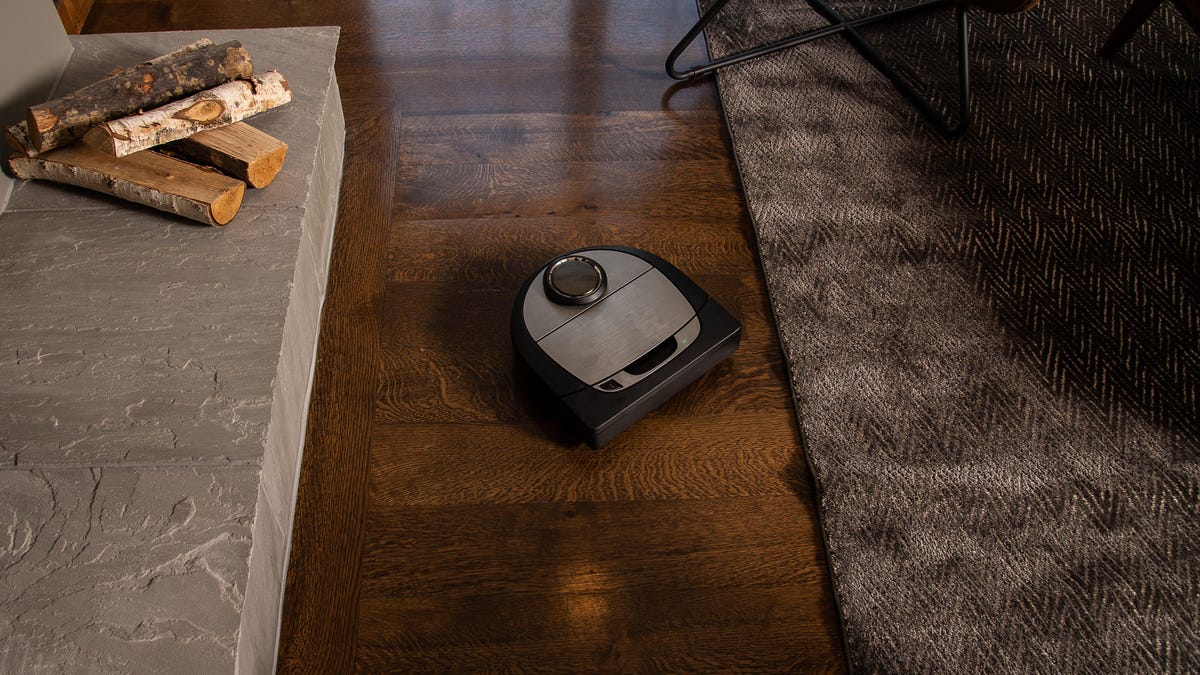 Why You Can Trust CNET
Why You Can Trust CNET Your Robot Vacuum Can Clean Even Better (but You Need to Do These 5 Things First)
Obstacles like cords and carpets can prevent your robot vacuum from cleaning its best.
Robot vacuums are certainly convenient. With intelligent navigational capabilities and, in some cases, self-emptying dustbins, these domestic helpers can automatically clean your floors for you while you go on with your day-to-day tasks.
Even so, they're not completely hands-free. Without regular maintenance, cleaning and care, they can fail in their duties. The same is true if you don't properly prepare your home before vacuuming. Clearing problematic obstacles and other physical hazards (like cords, discarded socks and curtains) from the ground goes a long way to achieving true automatic vacuuming bliss.
That means you'll need to follow some best practices to get the most out of your robot vacuum. I'll walk you through all of it below -- and have no fear, it's still less work than cleaning your floors the old-fashioned way. (You can also check out CNET's favorite vacuum cleaners and cordless vacuum cleaners of the year.)
1. Get rid of cords and other household obstacles
Apart from pet messes and discarded socks, the biggest threats to robot vacuums are electrical cords and other household wiring. These cables can easily ensnare a robot's rotating brushes and wheels, at which point you'll need to carefully untangle things yourself.
A messy tangle of AV cords and wires can easily snarl robot vacuums.
That's why it's a good idea to tidy up any masses of tangled cabling as best you can before your robot vacuum starts a cleaning run. Fortunately, there are plenty of off-the-shelf products that can help with cord management. In a pinch, a cheap twist tie will get the job done, too.
Dining chairs and hanging curtains can also hinder your robot vacuum's cleaning ability. Your robot vacuum can't properly navigate if it gets stuck on curtains that pool on the floor or is blocked by dining chairs. To prevent any obstacles, consider moving curtains or finding a trick to shorten the fabric so it's not draped to the floor, and flipping dining chairs upside down on the table while the robot vacuum runs.
Cable management systems or even a twist-tie can help deal with cord clutter.
2. Beware of high-pile carpets
I admit the stylish allure of plush, high-pile and shag area rugs is hard to resist. Sadly, these floor decorations also tend to be problematic for robot cleaners. Many models often become bogged down by the thick fibers of high-pile carpeting.
To keep your robot vacuum from getting stuck, consider rolling up the edges of your thick area rugs before initiating a cleaning session. Another option is to virtually block off these floor sections. If your robot supports this function, you'll find it within the machine's phone app.
Water and robots don't mix. Clear away or block access to pet water bowls and potted house plants.
3. Watch out for water
Typically water and electronics don't mix well, so you'll want to be aware of any liquids your robot vacuum may encounter on the floor. Pet water bowls are a notorious source of spilled water, for instance. Your best bet is to fence off areas like those either physically or electronically (via the vacuum's app) so your robot can avoid them.
4. Keep the sensors clean
Robot vacuums use a bevy of electronic sensors to navigate through your home properly, including infrared emitters, laser turrets and cliff sensors, plus optical sensors and digital cameras. Over time, your robot and its sensor hardware will get dirty.
This grime will impair a robot's ability to interpret the physical space around it. That's why it's imperative to regularly clean your vacuum's external chassis and sensor system. I've found that a slightly damp microfiber cloth works well here. Still, it's a good idea to consult your robot's manual for the manufacturer's recommended method.
Some robot vacuums can empty their own dustbins. If yours doesn't make to clean it out regularly.
5. Empty its dustbin often
Shop around, and you'll find a number of fancy robot vacuum cleaners that come with charging docks that can also empty the robot's dustbin -- but that's still a high-end feature not available with most cleaners.
In the majority of cases, your robot vacuum will only have a small-capacity dust container inside it that you'll need to empty often, ideally after each cleaning run. Fail to do so, and you'll clog things up, diminishing the vacuum's ability to continue sucking up dirt and debris.
Even sophisticated robots with self-emptying bins can get clogged from time to time, so no matter how fancy your robot vacuum is, you'll want to be sure to check its dirt-handling apparatus frequently to avoid any unexpected problems.
For more vacuum tips, explore the best Roomba alternatives to keep your floors clean and the best robot vacuum deals available now.




